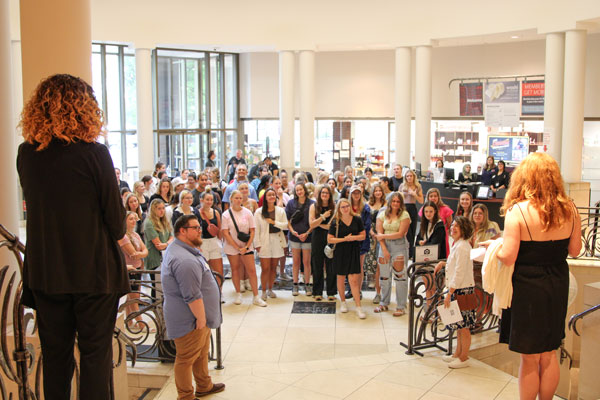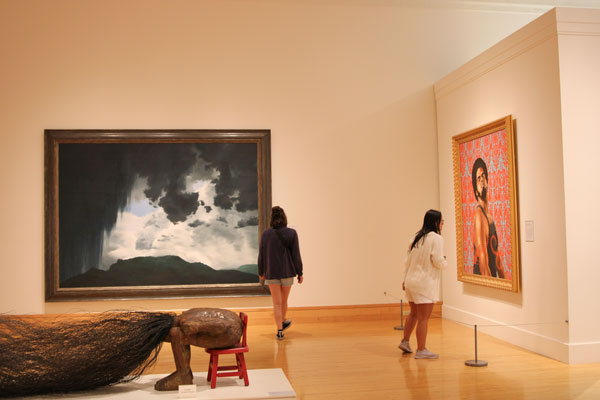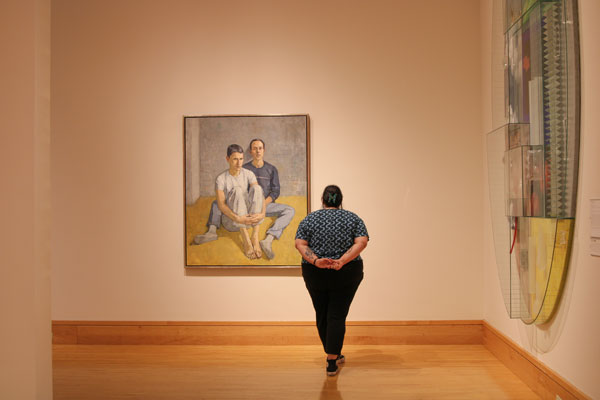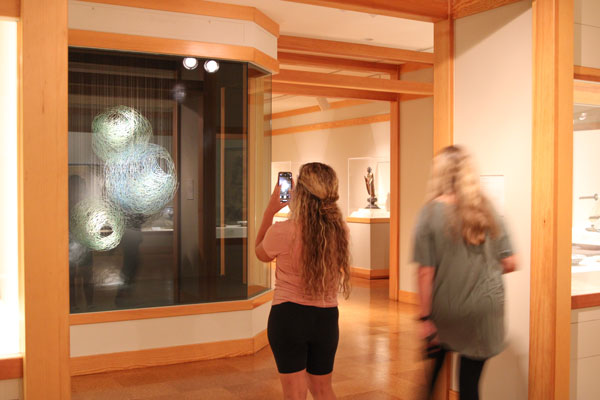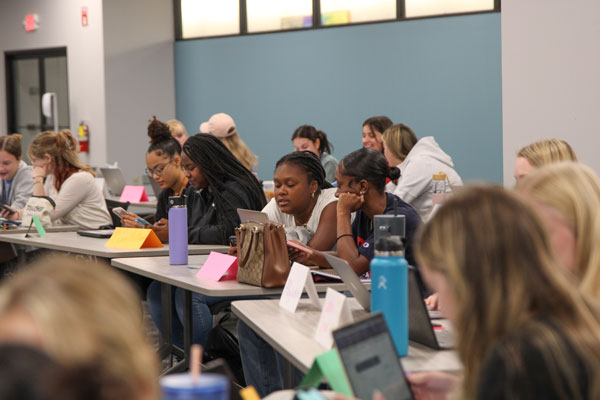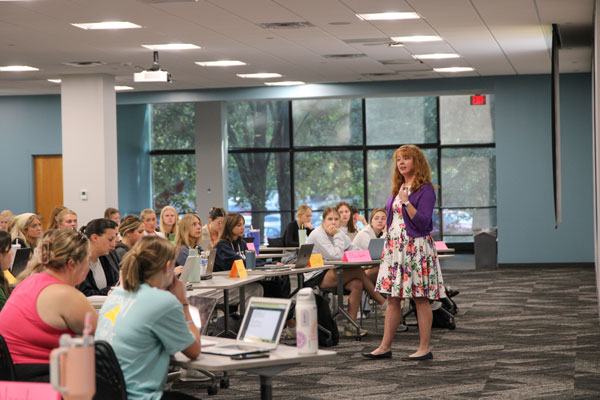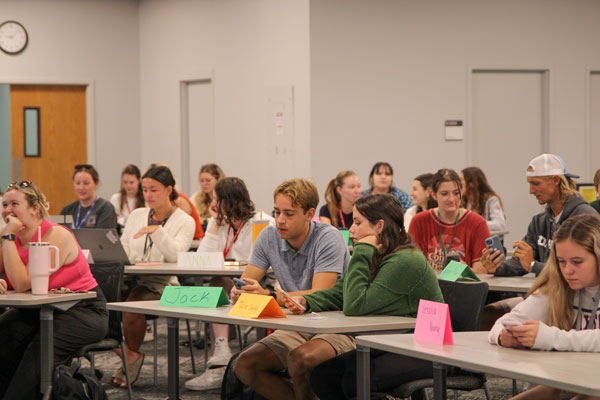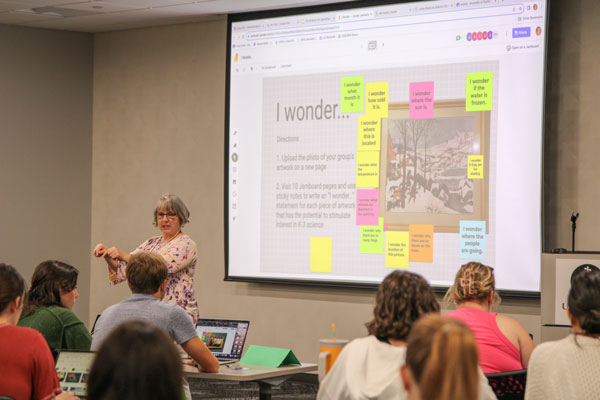Inside Education and Health Sciences
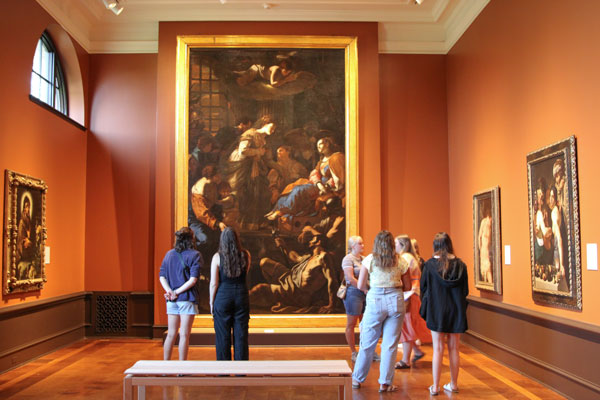
The Art of Teaching
By Emily Clemenson
What does an art museum have to do with math? With science? With social studies, or language arts? Turns out, a lot.
The Senior Block class in the Department of Teacher Education at the University of Dayton is a series of four teaching-methods courses led by professors of literacy, mathematics, science, and social studies. Each fall, the class kicks off with a trip to the Dayton Art Institute to do a little art appreciation. Seniors in the Preschool to Grade 5 concentration — this year there are 72 of them — are asked to take photos of 10 pieces of art that they connect with.
A couple of days later, the class meets with all four professors. Dr. Vanessa Winn kicks the class off with a discussion about social studies.
"Spend a couple of minutes looking into the history of the artist," she says. "Where did they live? What year did they create this piece? What else was happening in the world at that time?"
After a lively discussion, Angie Dunn steps to the front to talk about literacy.
"Did you notice any pieces in the museum by children's artists?" she asks. She then shared a children's book with the class with rich vocabulary depicted through the illustrations.
Next up: math.
"Math is everywhere!" exclaims Dr. Lindsay Gold. "What are some math words that come up when you look at your 10 images?" The students piped up: Symmetry! Perspective! Angles! Circles! Distance! Patterns! Ratios!
Finally, Dr. Mary Kay Kelly comes up, encouraging the students to look at art from a science lens. "In which season is the painting set?" she asked. Why does the water off the rocky Pacific coast look so turbulent and cold? Why are there no leaves on the trees?"
By doing this exercise, the teacher candidates are given an opportunity to practice integrating different subject matters into a single lesson. As a primary school teacher, they'll have to be knowledgeable across all subject areas.
It also exposes the teacher candidates to non-traditional learning environments and non-traditional ways of teaching.
"Our hope, as a senior block team, is to model collaboration, planning, and implementation of a transdisciplinary experience," Gold said. "We want our students to see that curricular opportunities are all around us and with a little bit of support, open mindfulness, and creativity, they can plan engaging lessons that help their students make connections between the content and their lives."
Angeles Fonseca is a senior from Murfreesboro, Tennessee. She will be student teaching at Dr. John Hole Elementary in the spring, and she has already started to think about ways to incorporate this lesson into her curriculum.
"My biggest takeaway from the Dayton Art Institute trip is that engaging within a student's community is very valuable," she said. "It is not often that college students are able to step out of the traditional classroom and explore content in different ways within the community."
Did you know? All UD students have a membership to the Dayton Art Institute with their regular student ID. Undergraduates can get a free family day pass during Family Weekend. Read more information about the DAI partnership here.

